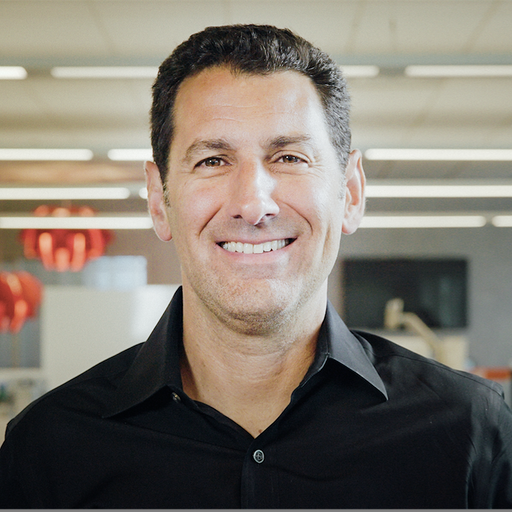Since the advent of the pandemic, more and more media companies have begun to embrace the cloud across a range of disciplines, from virtual production to playout to the metaverse.
AWS has been at the forefront of that adoption, working with traditional broadcasters, streamers and technology vendors to help the industry see the potential in the cloud. Key to that focus is the company’s aim to be at the forefront of innovation across multiple areas including content production, media supply chain and archive, direct-to-consumer, streaming, and data science, believes Marc Aldrich, general manager for global media and entertainment at AWS.
Speaking to TVBEurope at the company’s re:Invent conference, Aldrich says he sees AWS’s role as helping to innovate and modernise the media industry. “As the broadcast industry continues to evolve with streaming, we want to make sure that we’re taking the best components of both linear and streaming and delivering those outcomes to customers so that they can deliver that to their audience,” he says.
While some media companies were beginning to look at the cloud pre-2020, the pandemic forced many to speed up that transition. Aldrich states that the best way to convince those that have been wary of that adoption is to introduce them to colleagues who have embraced the cloud. “You can’t force people to believe, you have to demonstrate,” he adds. “I think what’s interesting about re:Invent is the vast majority of the sessions that we have are customer and partner-driven.

“It’s a very powerful thing to hear customers learn from each other. And in fact, the media and entertainment industry is a very collaborative, collegial industry, particularly the technical side of the equation. I would say to anyone looking to move to the cloud, ‘talk to other customers that have been through that journey’. There are companies that really want to keep their toe in the water of on-prem. What we tend to do there is move towards what they are comfortable with, playout typically, and as they get comfortable, they look to do other things in the cloud. So I think it’s a journey that all customers have to go through individually, but as they share the experiences together it helps all of them together.”
That sharing of experiences becomes particularly prevalent whenever something goes wrong, such as an issue with playout. As Aldrich says, because of the way the industry is, everybody hears about it and nobody wants to go through it. “We have a lot of interest in disaster recovery,” he continues. “Disaster recovery is a critical component of conversations around the cloud. I don’t want to say it is the most important, but it’s absolutely a consideration because you start to talk about facilities, and what’s in that back-up facility. Is it up to date? Have you checked the code? And the answer most of the time is ‘no’. Same thing with security.”
Back at IBC, it seemed the buzzword of this year’s show was FAST (free ad-supported television). Aldrich believes this new way to deliver content to viewers is important, particularly due to what’s happening in the advertising space from a monetisation perspective. “There’s still a lot of learning to happen about where the money flows,” he adds. “We are doing a lot of FAST with partners, Amagi is a very big player, Imagine wants to get into that space. What we’re trying to do as much as anything else is be an enabler and provide whatever back-end support technology is necessary to be able to deliver those things.
“The FAST uptake is a direct correlation to the need for profitability,” he adds. “It’s in an experimental phase right now. We don’t have a crystal ball, but our customers want to go in that direction. We want to provide all the technology that we can to help that get facilitated and come to some kind of roadmap and path.”
Cloud and sustainability
During his keynote at re:Invent, AWS CEO Adam Selipsky described sustainability as “the issue of a generation”. Amazon itself is committed to deploying all reusable energy by 2030 and becoming completely carbon neutral ten years later.
“From a media and entertainment perspective, we have started looking at sustainability,” adds Aldrich. “If you think of virtual content production as an area where you can really impact sustainability, we’ve done quite a bit of experimental work with both live sport productions, as well as episodic.
“Our particular focus on sustainability for M&E is in the virtual content space because that’s where the most resources get applied. Whenever you’re doing a production like a live sporting event, or if you’re doing a movie, you’re shipping all these resources. If you can eliminate 50-70 per cent of those resources, that translates into a much more efficient use of resources. We talked about the media industry being very collaborative. The technology is capable of doing much more from a virtual content production perspective than it ever has before, and I think we will continue to push that envelope.”
Talking of virtual opportunities, a big future focus at the moment across the industry is the metaverse. Both technology vendors and content creators are seeing plenty of opportunity within the space. It’s an area where Aldrich sees opportunity for AWS, but he adds that development will be led by the company’s customers. “We always work backwards from our customers and what they believe is the direction they want to go. What I’ve heard customers talk about more recently is certainly the intersection of sports and games and media is a very important paradigm. What we’re starting to see some companies do is produce a movie or a game and have all the characteristics be able to go in either direction. We see it as our ability to provide the underlying technology for them to execute.
“Beyond that, I don’t think we’re trying to steer where this goes, we’re really interested to figure out where our customers believe they can have success and monetise this, and then we’ll be there to provide the underlying technology to help facilitate that journey.”
Finally, Aldrich discussed the challenges the industry faces in the coming years, including the push to streaming and direct-to-consumer and the need for some companies to find profitability within that. “There’s been a tremendous amount of mergers and acquisitions and if you talk to some analysts, they don’t believe that the value is being created over time,” he adds. “I’m not saying I believe that, it’s just what the analysts are saying.
“What I am really bullish about is that the industry itself embraces the cloud as an enabler to optimise and increase agility. I feel like the relationship that we have with the industry is a very positive one in that way. Helping to optimise and lower the cost in those streaming services is something that we have an ability to do, and that’s something we’ll continue to do. But we’re not the largest part of that cost equation either. So I think getting those in line and making sure that there’s a fundamental value proposition to their audiences, and they can still make money is the challenge that many of the large media companies are facing right now.”







